Ginger Tea: A Natural Remedy for Period Bloating – An Indian Youth’s Guide
Menstrual cycles can be challenging, with cramps, mood swings, and the infamous bloating making it hard to function at your best.
If you’re an Indian youth juggling studies, work, and social commitments, the added discomfort of period bloating can feel like an unwelcome guest. But what if the solution lies in your kitchen?
According to age-old wisdom—something our mothers have always known—ginger tea is a simple, effective remedy for easing period bloating.
This blog delves into why ginger tea is a go-to solution for menstrual bloating and how it aligns with the lifestyle of Indian youth. Let’s explore how this golden elixir can make your period days a little easier.
Understanding Period Bloating
Period bloating occurs due to hormonal fluctuations, particularly increased levels of estrogen and progesterone. These hormones cause water retention, which leads to a feeling of puffiness or tightness, especially around the abdomen.
While bloating is a normal part of the menstrual cycle, it can be uncomfortable and frustrating.
Why Do Indian Youth Face More Challenges?
As a young Indian, you may already have a hectic lifestyle, balancing academics, work, or other responsibilities. Add to this the cultural expectations and dietary habits that sometimes lean heavily on processed foods, salt, or caffeine—all of which can exacerbate bloating.
Furthermore, in many Indian households, discussing menstruation with male family members is still considered taboo. Some deeply ingrained cultural practices also restrict women during their menstrual cycle, such as not allowing them to enter the kitchen or sleep in a proper bed.
These emotionally distressing practices can, in turn, cause stress, leading to the release of cortisol, a stress hormone that worsens physical discomfort, including bloating.
This is where natural remedies like ginger tea can make a significant difference.
Why Ginger Tea Works Wonders for Period Bloating
1. Anti-inflammatory Properties
Ginger contains powerful anti-inflammatory compounds called gingerols and shogaols. These help reduce the inflammation in the gut, relieving bloating and soothing abdominal discomfort.
2. Promotes Digestive Health
Bloating often stems from digestive issues like slow metabolism or gas buildup. Ginger tea stimulates the digestive enzymes, aiding in faster digestion and reducing gas.
3. Diuretic Effect
Ginger tea has mild diuretic properties that help flush out excess water from the body, reducing water retention and puffiness.
4. Hormonal Balance
Ginger may also play a role in regulating hormones, helping reduce the severity of period symptoms, including bloating, cramps, and mood swings.
5. Warmth and Comfort
A hot cup of ginger tea provides warmth and relaxation, which can ease period discomfort and elevate your mood during challenging days.
Ginger Tea for Period Bloating: Step-by-Step Approach with External Resources
Here’s how you can implement ginger tea as a remedy for period bloating, broken down into actionable steps. Additionally, external links provide deeper insights and credibility.
Step 1: Understand the Science Behind Ginger and Menstrual Health
Before diving into remedies, it’s helpful to understand why ginger is effective for bloating and menstrual discomfort. Research confirms its anti-inflammatory, digestive, and hormone-regulating properties.
External Resources:
Step 2: Gather Ingredients
Head to your kitchen or a local grocery store to gather the following ingredients:
- Fresh ginger root
- Water
- Optional: honey, lemon, or additional spices like cardamom
External Resources:
- BBC Good Food: Why Fresh Ginger Is Better Than Powder
- Times of India: Ginger Benefits in Indian Cooking
Step 3: Prepare Ginger Tea
Follow this quick recipe:
- Boil 2 cups of water in a pan.
- Grate or thinly slice 1-2 inches of fresh ginger.
- Add the ginger to the boiling water and let it simmer for 5-7 minutes.
- Strain the tea into a cup.
- Add a teaspoon of honey or a squeeze of lemon for extra flavor.
External Resources:
Step 4: Drink Responsibly
Consume ginger tea once or twice a day during your menstrual cycle. Avoid drinking excessive amounts, as it can lead to acidity or heartburn in some individuals.
External Resources:
Step 5: Pair Ginger Tea with Lifestyle Adjustments
For maximum relief, complement ginger tea with:
- Hydration: Drink at least 2-3 liters of water daily.
- Diet: Include fiber-rich foods and avoid salty snacks.
- Light Exercise: Try yoga or gentle stretching exercises.
External Resources:
Step 6: Monitor the Results
Keep track of how ginger tea affects your period symptoms over a few cycles. If the bloating significantly reduces, incorporate it into your routine. However, if symptoms persist, consult a healthcare provider.
External Resources:
- WebMD: When to See a Doctor for Menstrual Symptoms
- National Library of Medicine: Gut Health and Hormonal Cycles
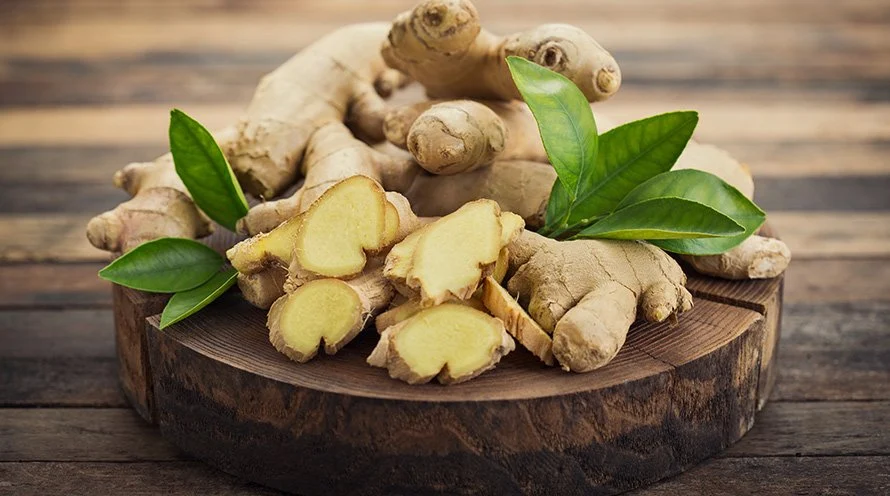
Quick Overview of the Steps to Use Ginger Tea for Period Bloating
- Understand the Science Behind Ginger
Ginger’s anti-inflammatory and digestive properties make it effective for easing period bloating. Its ability to regulate hormones also helps reduce discomfort during your menstrual cycle. - Gather the Ingredients
You’ll need fresh ginger root, water, and optional ingredients like honey, lemon, or cardamom for added flavor. - Prepare Ginger Tea
Boil 2 cups of water, add grated or sliced ginger, and let it simmer for 5-7 minutes. Strain into a cup and add honey or lemon if desired. - Drink Responsibly
Drink ginger tea once or twice a day during your period, but avoid overconsumption to prevent acidity or heartburn. - Pair with Lifestyle Adjustments
Stay hydrated, eat fiber-rich foods, and engage in light exercise like yoga to enhance the effectiveness of ginger tea in reducing bloating. - Monitor the Results
Track how your symptoms change over a few cycles. If bloating decreases, continue using ginger tea. If symptoms persist, consult a healthcare provider.
By following these simple steps, you can naturally manage period bloating and stay connected to time-tested, culturally rooted remedies.
When and How Often Should You Drink Ginger Tea?
For best results, drink ginger tea:
- 1-2 times a day during your menstrual cycle, especially when bloating is at its peak.
- First thing in the morning on an empty stomach or in the evening for a calming effect.
Avoid overconsumption, as too much ginger can sometimes cause heartburn or acidity.
The Cultural Connection: Wisdom Passed Down
In Indian households, natural remedies like ginger tea have been trusted for generations. Whether it’s curing a sore throat or soothing an upset stomach, ginger holds a revered place in Ayurvedic medicine. Our mothers and grandmothers often know the value of these age-old practices, even when modern science is just catching up.
As Indian youth, incorporating these traditional remedies into your lifestyle allows you to stay connected to your roots while addressing modern-day health challenges.
Why Ginger Tea Fits the Lifestyle of Indian Youth
- Quick and Easy to Prepare: With minimal ingredients and effort, ginger tea can be made in minutes, making it perfect for busy students or young professionals.
- Affordable and Accessible: Ginger is readily available in most Indian kitchens, making this remedy cost-effective and convenient.
- Customizable Flavor: You can experiment with add-ons like cardamom, cinnamon, or tulsi to suit your taste preferences.
- Holistic Wellness: Beyond bloating, ginger tea helps with cramps, nausea, and even stress—common challenges faced by Indian youth.
Additional Tips to Combat Period Bloating
While ginger tea is an excellent remedy, combining it with a healthy lifestyle can enhance its effects:
- Stay Hydrated: Drink plenty of water to prevent water retention.
- Reduce Salt Intake: Avoid salty snacks, which can worsen bloating.
- Eat Fiber-Rich Foods: Include fruits, vegetables, and whole grains in your diet to promote digestion.
- Exercise Gently: Yoga and light stretches can help alleviate bloating and cramps.
- Limit Caffeine: Replace coffee with herbal teas like ginger, chamomile, or peppermint during your period.
Conclusion: A Cup of Comfort
Ginger tea is more than just a beverage—it’s a cup of comfort, offering relief from period bloating and other menstrual woes. As an Indian youth navigating the complexities of modern life, embracing this traditional remedy can be a game-changer for your overall well-being.
The next time your period brings along bloating, listen to your mom’s advice and brew yourself a warm, soothing cup of ginger tea. It’s a small act of self-care that can make a big difference.
So, why wait? Give ginger tea a try and experience its magical benefits for yourself!
Disclaimer:
The information provided in this blog is intended for general informational purposes only. While ginger tea has been traditionally used in Ayurvedic medicine and has some proven health benefits, it should not be considered a substitute for professional medical advice, diagnosis, or treatment. Always consult with a healthcare provider before making any significant changes to your diet, especially if you have underlying health conditions or are taking medications.
Individual results may vary, and excessive consumption of ginger can lead to side effects such as heartburn or gastrointestinal discomfort. Please consume ginger tea in moderation.
The external resources linked in this article are for reference purposes and do not necessarily reflect the views or recommendations of the author.
-
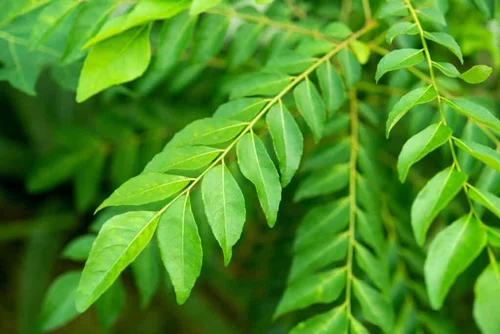
Say Goodbye to Digestive Woes with Curry Leaves: The Authentic Guide
Say Goodbye to Digestive Woes with Curry Leaves: The Authentic Guide
If you’ve ever felt sluggish, bloated, or uncomfortable after a meal, you’re not alone. Indigestion is a common issue that can make eating a challenge. But what if a simple, natural remedy was right in your kitchen, ready to help soothe your digestive woes?
Most of us are familiar with the wonder leaf used in Indian cuisine, which Indians refer to as Karripatha or curry leaves. These small green leaves are sometimes overlooked, but they are incredible at curing digestive issues. This might be why they are so popular in all parts of India. I still remember the curry leaf tree in the backyard of our house.
The Power of Curry Leaves for Digestion
Curry leaves, also known as Murraya koenigii (scientific name), are a staple in Indian kitchens. They not only add a distinct aroma and flavor to dishes but have been valued in traditional medicine for their various health benefits. Among these, digestive health stands out as one of their most significant attributes.
Recent studies and centuries-old Ayurvedic practices show that curry leaves can be incredibly effective in supporting digestive health. Here’s how:
1. Rich in Nutrients for Digestive Support
Curry leaves are packed with essential nutrients, including vitamins A, B, C, and minerals like calcium and iron. These nutrients not only nourish your body but also promote healthy digestion by improving gut motility, reducing acid reflux, and regulating bowel movements.
2. Prevents Constipation
One of the most common digestive issues is constipation, which can leave you feeling uncomfortable and sluggish. Curry leaves are known for their laxative properties, which help in improving bowel movements. They can relieve constipation by stimulating the digestive system and facilitating the passage of stools.
3. Treats Indigestion and Acidity
Indigestion, characterized by bloating, discomfort, and acid reflux, is a widespread problem. Curry leaves have been traditionally used to treat indigestion by increasing digestive enzyme production, which helps break down food more efficiently. Additionally, curry leaves help in neutralizing gastric acid and alleviating acidity.
4. Aids in Detoxification
Curry leaves help detoxify the body by supporting liver function. The liver plays a crucial role in digestion by processing toxins and ensuring the smooth breakdown of fats. Curry leaves can help in flushing out toxins and promoting overall digestive health, keeping your system clean and functioning optimally.
5. Improves Appetite and Digestion
Curry leaves are known to stimulate the production of bile, which aids in the digestion of fats. They also help to enhance appetite, making them useful for those who struggle with low appetite due to digestive problems or illness.
6. Antioxidant and Anti-inflammatory Properties
The antioxidants in curry leaves help reduce inflammation in the gut, promoting overall digestive well-being. They also prevent oxidative stress, which can damage the digestive system and lead to chronic conditions such as irritable bowel syndrome (IBS).
How to Incorporate Curry Leaves into Your Routine
To get the most benefits from curry leaves, you don’t need to do anything extravagant. There are simple and easy ways to add curry leaves to your diet:
- Curry Leaf Tea: A traditional remedy for digestive issues. Boil a handful of curry leaves in water for a few minutes, strain, and drink the tea.
- Curry Leaf Powder: You can dry curry leaves and grind them into a powder. Add this powder to warm water or mix it into your food to promote digestion.
- Add to Dishes: Curry leaves are commonly used in curries, dals, and soups. Simply add fresh curry leaves to your cooking to enjoy their digestive benefits.
- Curry Leaf Oil: For external use, curry leaf oil can be massaged onto the abdomen for soothing relief from bloating and indigestion.
Scientific Backing for Curry Leaves and Digestion
Several studies have validated the benefits of curry leaves for digestive health. One such study published in the Journal of Ethnopharmacology found that curry leaves have a beneficial effect on gastrointestinal health, reducing inflammation and promoting healing. Their antimicrobial and anti-inflammatory properties make them effective in combating digestive issues like indigestion, bloating, and constipation.
Furthermore, curry leaves contain compounds like alkaloids and flavonoids, which contribute to their digestive benefits by improving gut health and alleviating discomfort.
The Cultural Significance of Curry Leaves in Indian Medicine
In Ayurveda, curry leaves have been used for centuries to treat various ailments, including digestive issues. Known as “Karipatta” in Hindi, curry leaves are a staple in Ayurvedic treatments and are thought to possess a range of healing properties, including those that benefit the stomach and intestines.
Ayurvedic practitioners recommend curry leaves for balancing the doshas (Vata, Pitta, and Kapha) and promoting digestive fire or Agni, which is central to good digestion and overall health.
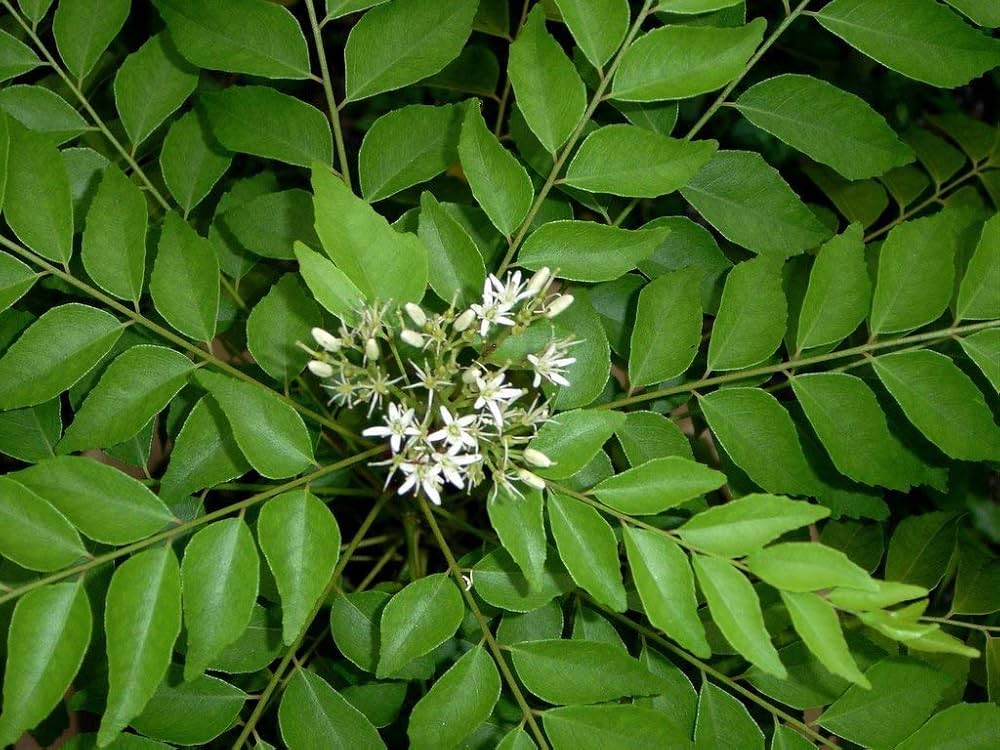
Conclusion: Say Goodbye to Digestive Woes with Curry Leaves
Curry leaves are not just a flavorful addition to your meals; they’re a powerful ally in improving your digestive health. Whether you’re dealing with bloating, indigestion, or constipation, incorporating curry leaves into your daily routine can provide significant relief. Backed by both tradition and scientific research, curry leaves are a natural remedy that deserves a place in every kitchen.
Remember, while curry leaves are a great tool for digestive health, consistency is key. Make them a regular part of your diet and enjoy a smoother, healthier digestion.
Disclaimer:
The information provided in this blog is for general informational purposes only and is not intended as a substitute for professional medical advice, diagnosis, or treatment. While curry leaves have been traditionally used for digestive health and other benefits, individual responses may vary. If you have persistent digestive issues or underlying health conditions, consult a healthcare professional before incorporating any new remedies into your routine. Always use moderation and seek expert guidance when necessary.
Check our Lastest blog post:
- Nuts and Legumes: A Surprising Connection Explained (And Why It Matters to Your Diet)
- Where Do Pine Nuts Originate From? A Journey of Delicious Delicacy
- Discover the 7 Types of Tree Nuts: Unlocking Nutrition and Flavor
- India’s Electric Vehicle Revolution: A 5-Year Growth Story
- Safeguarding the Maritime Nation: Achievements of the Indian Coast Guard
-

6 Natural Home Remedies to Soothe Period Bloating and Feel Better Instantly
6 Home Remedies to Soothe Period Bloating: Natural Ways to Feel Better
Period bloating is a common issue that many women experience during their menstrual cycle. It can leave you feeling heavy, uncomfortable, and sometimes even frustrated. While reaching for over-the-counter medications might seem like the easiest solution, there are several natural remedies you can try to alleviate bloating. These remedies not only provide relief but also contribute to your overall well-being. Let’s explore six effective home remedies that can help soothe period bloating.
1. Ginger Tea: A Warm Hug for Your Stomach
As your mom suggested, ginger tea works wonders for bloating. Ginger contains compounds like gingerol and shogaol that help reduce inflammation and relax the gastrointestinal muscles, providing quick relief from bloating. Its natural antispasmodic properties can also ease menstrual cramps.
How to Use:
- Boil a cup of water with a few slices of fresh ginger.
- Let it steep for 5-7 minutes.
- Add a teaspoon of honey for sweetness and enjoy it warm.
Drinking ginger tea 1-2 times a day during your period can significantly reduce bloating and improve digestion.
Learn More: Healthline: Benefits of Ginger Tea for Bloating
2. Fennel Seeds: The Digestive Aid
Fennel seeds are a time-tested remedy for digestive issues, including bloating. They have carminative properties that help expel gas from the digestive tract and reduce bloating. Plus, fennel seeds have a mild diuretic effect, which can help your body shed excess water weight.
How to Use:
- Chew on a teaspoon of fennel seeds after meals.
- Alternatively, steep a teaspoon of fennel seeds in hot water for 10 minutes to make fennel tea.
This simple remedy can help ease period bloating and improve digestion.
Learn More: Medical News Today: Fennel for Digestive Health
3. Warm Water with Lemon: Detox and De-bloat
Starting your day with warm water and lemon can do wonders for period bloating. Lemon is rich in vitamin C and acts as a natural diuretic, helping to flush out excess water and reduce bloating. Warm water helps to kickstart your metabolism and soothe your digestive system.
How to Use:
- Squeeze half a lemon into a glass of warm water.
- Drink it on an empty stomach every morning during your period.
This refreshing drink not only combats bloating but also boosts your immunity and hydrates your body.
Learn More: Cleveland Clinic: Foods That Help Reduce Water Retention
4. Bananas: A Potassium Powerhouse
Bananas are rich in potassium, which helps balance sodium levels in your body and reduces water retention—a major cause of bloating. They also contain natural sugars that can help curb cravings during your period.
How to Use:
- Eat a ripe banana as a snack or add it to your smoothies or oatmeal.
- Combining it with yogurt (another bloating remedy) can further enhance its effects.
Including potassium-rich foods like bananas in your diet can help you stay energized and de-bloated.
Learn More: WebMD: How to Relieve Bloating
5. Peppermint Tea: Cool and Calm Relief
Peppermint tea is a soothing remedy for bloating and abdominal discomfort. It contains menthol, which relaxes the digestive tract muscles and reduces bloating and cramping. Plus, the cooling effect of peppermint is incredibly refreshing.
How to Use:
- Steep a peppermint tea bag or a teaspoon of dried peppermint leaves in hot water for 5-10 minutes.
- Sip on the tea after meals or whenever you feel bloated.
This calming tea is a great addition to your period care routine.
Learn More: Healthline: Benefits of Herbal Teas
6. Cucumber and Watermelon: Hydrating and Refreshing
Cucumber and watermelon are high-water-content foods that help flush out excess sodium from your body, reducing water retention and bloating. They are also rich in antioxidants and vitamins that promote overall health.
How to Use:
- Snack on cucumber slices or watermelon chunks during the day.
- Add them to your water for a refreshing detox drink.
Staying hydrated with these fruits can significantly reduce bloating and keep you feeling light.
Learn More: National Institute on Aging: Benefits of Hydration
Lifestyle Tips for Managing Period Bloating
While these home remedies can provide relief, incorporating lifestyle changes can help you manage bloating more effectively:
- Stay Hydrated: Drink plenty of water throughout the day to prevent water retention.
- Reduce Salt Intake: Avoid high-sodium foods that can worsen bloating.
- Exercise Regularly: Gentle yoga or light walking can improve circulation and reduce bloating.
- Eat Smaller Meals: Instead of three large meals, opt for smaller, frequent meals to ease digestion.
- Avoid Carbonated Drinks: These can cause gas and exacerbate bloating.
- Get Adequate Sleep: Poor sleep can disrupt hormonal balance, making bloating worse.
Final Thoughts
Period bloating can be a nuisance, but these natural remedies offer a simple and effective way to manage the discomfort. Incorporate these six home remedies into your routine, and you’ll notice a significant difference in how you feel during your period. Remember, consistency is key, and combining these remedies with a healthy diet and lifestyle can amplify their benefits.
If your bloating persists or becomes severe, consult a healthcare professional to rule out any underlying issues. In the meantime, give these natural remedies a try and say goodbye to period bloating the gentle, natural way!
Disclaimer:
The information provided in this blog is intended for general informational purposes only, it should not be considered a substitute for professional medical advice, diagnosis, or treatment. Always consult with a healthcare provider before making any significant changes to your diet, especially if you have underlying health conditions or are taking medications.
Individual results may vary, and excessive consumption of ginger can lead to side effects such as heartburn or gastrointestinal discomfort. Please consume ginger tea in moderation.
The external resources linked in this article are for reference purposes and do not necessarily reflect the views or recommendations of the author.
Additional Resources
Healthline: Benefits of Herbal Teas
Healthline: Benefits of Ginger Tea for Bloating
Medical News Today: Fennel for Digestive Health
Cleveland Clinic: Foods That Help Reduce Water Retention
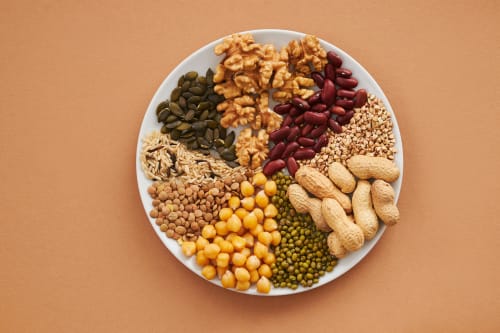





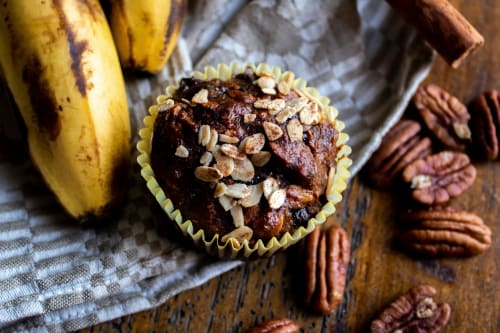


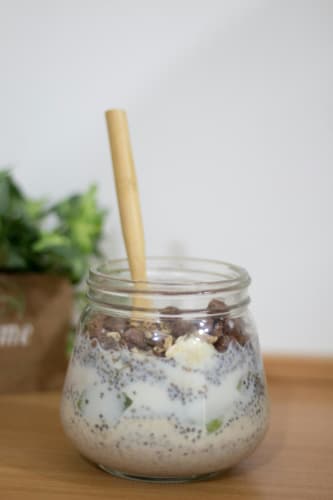
Leave a Reply